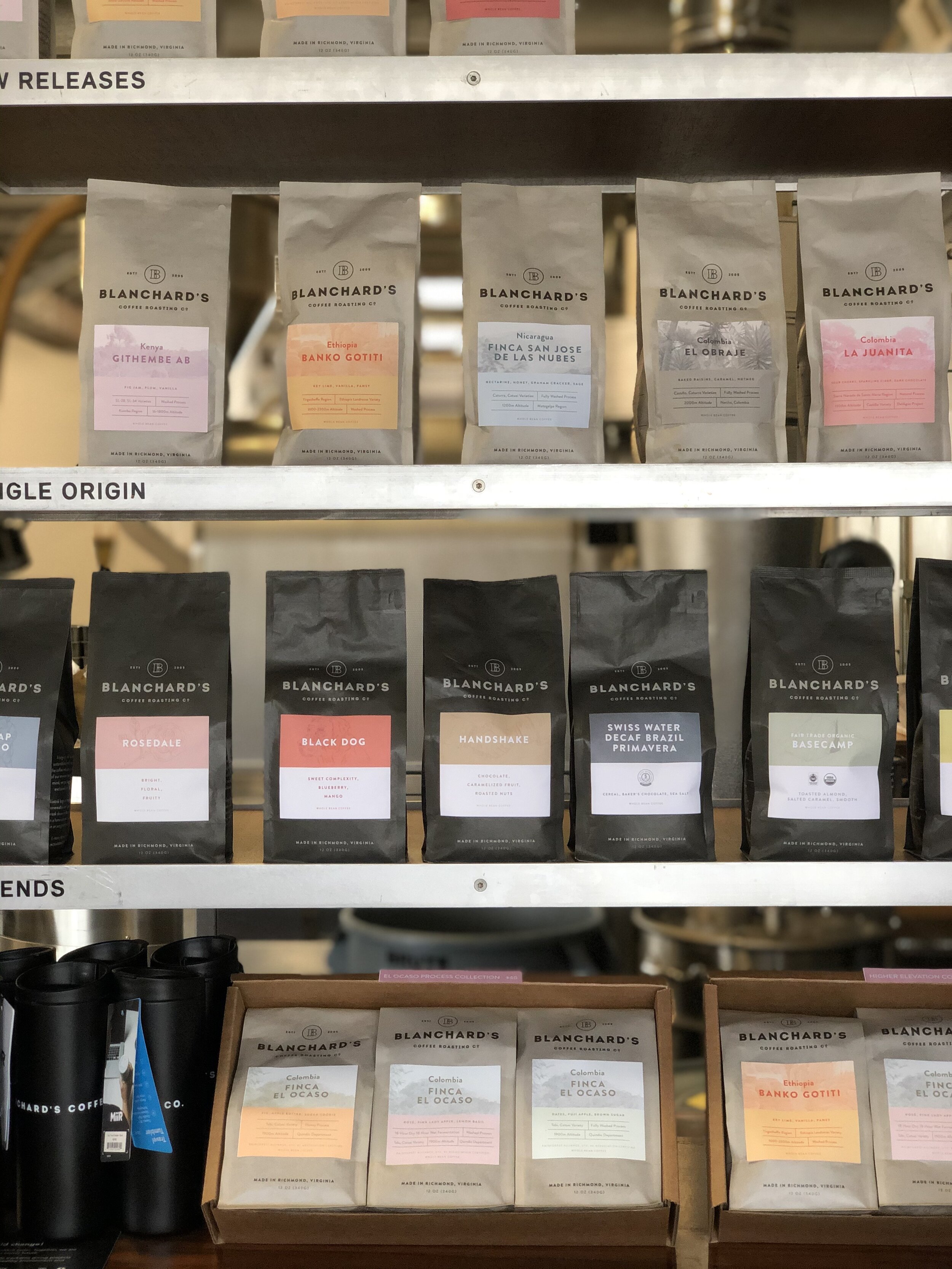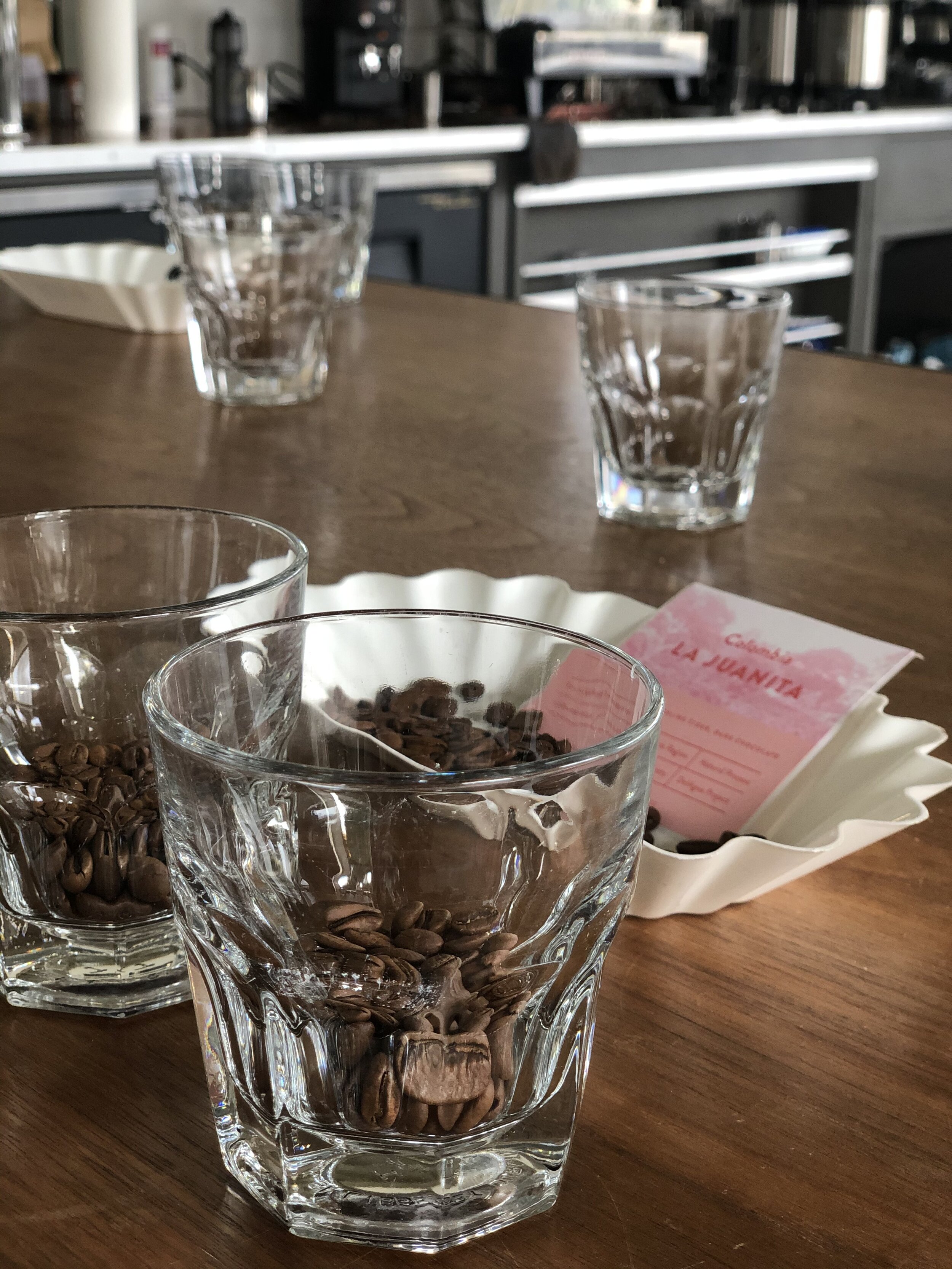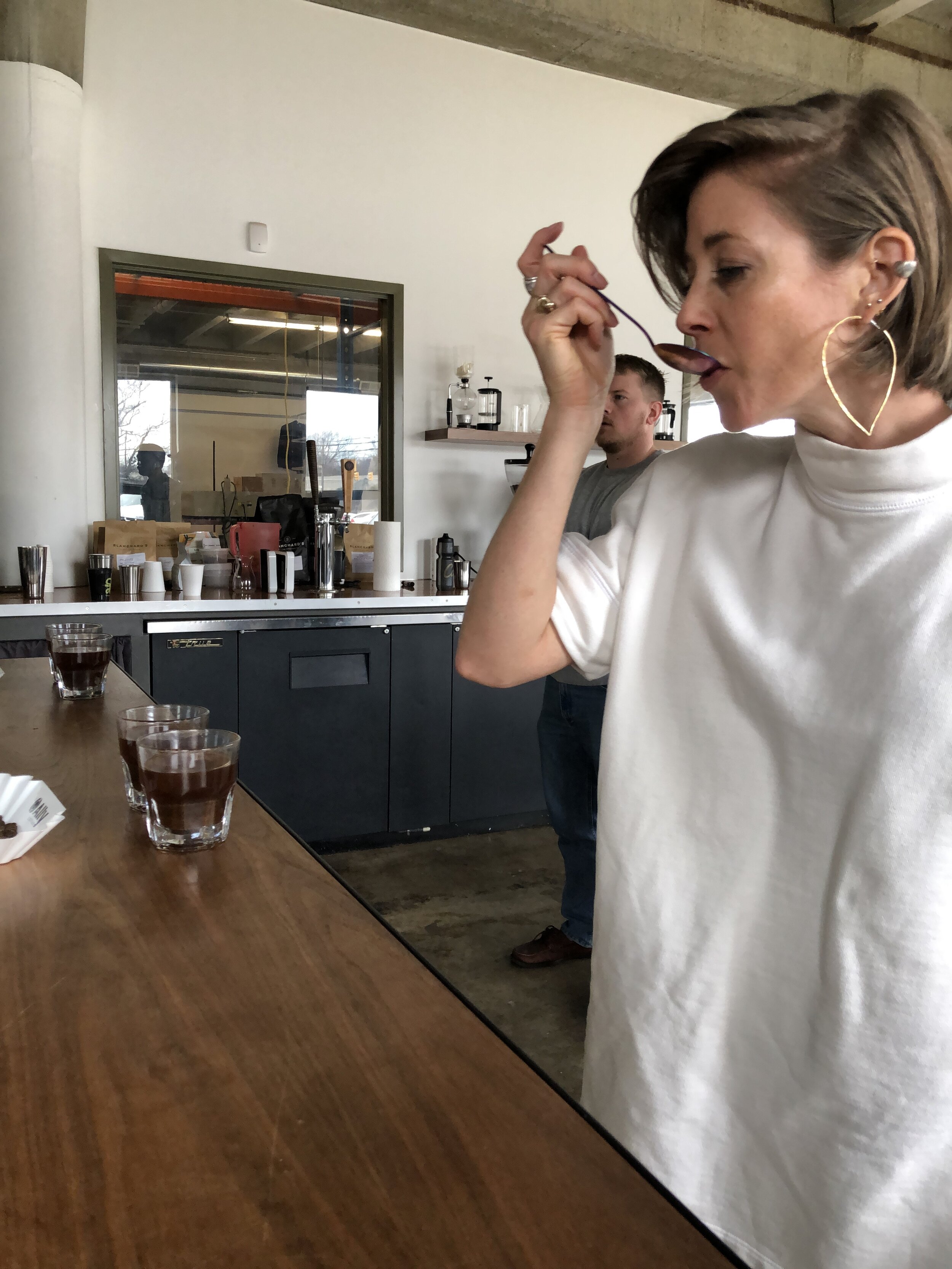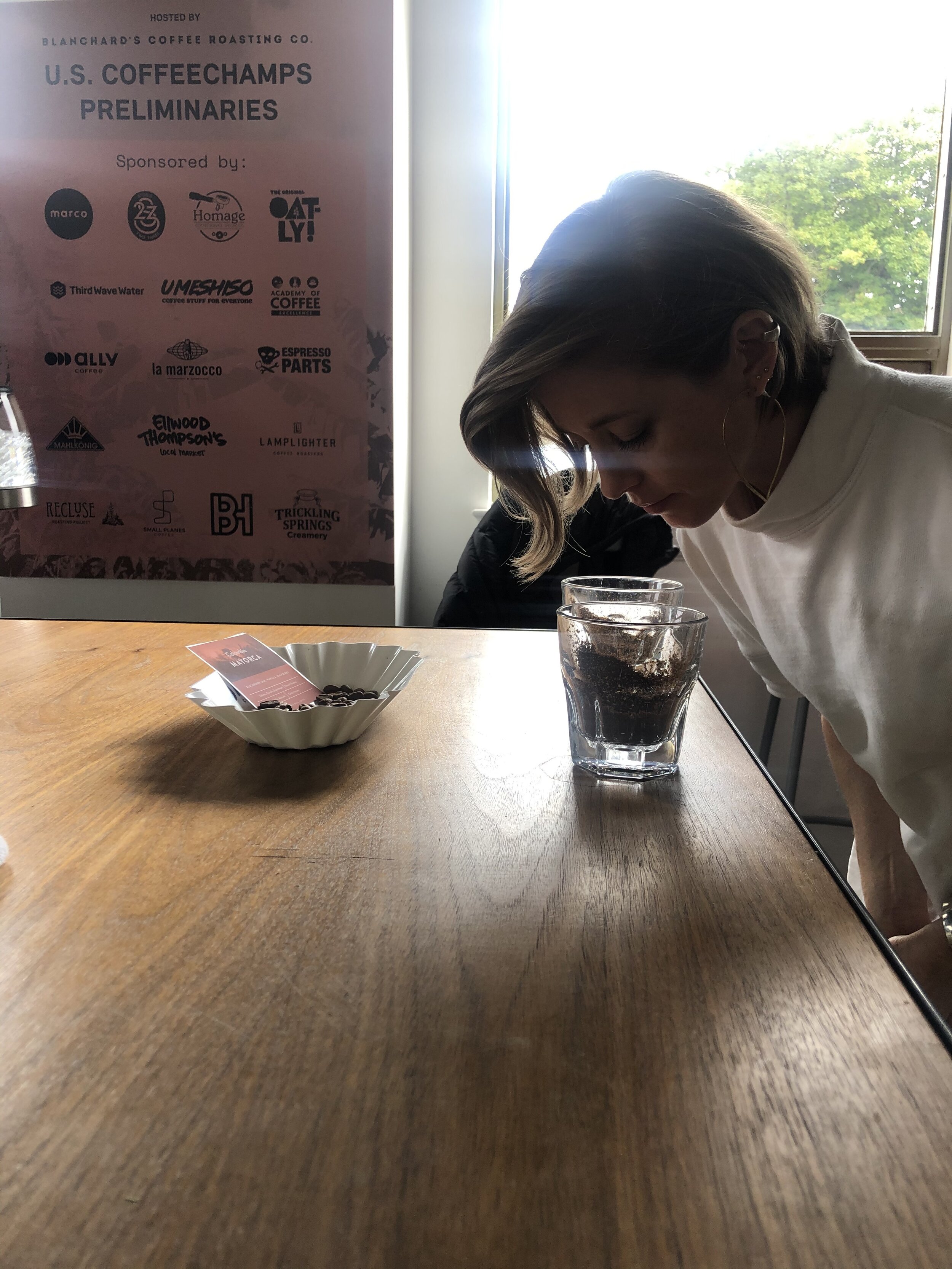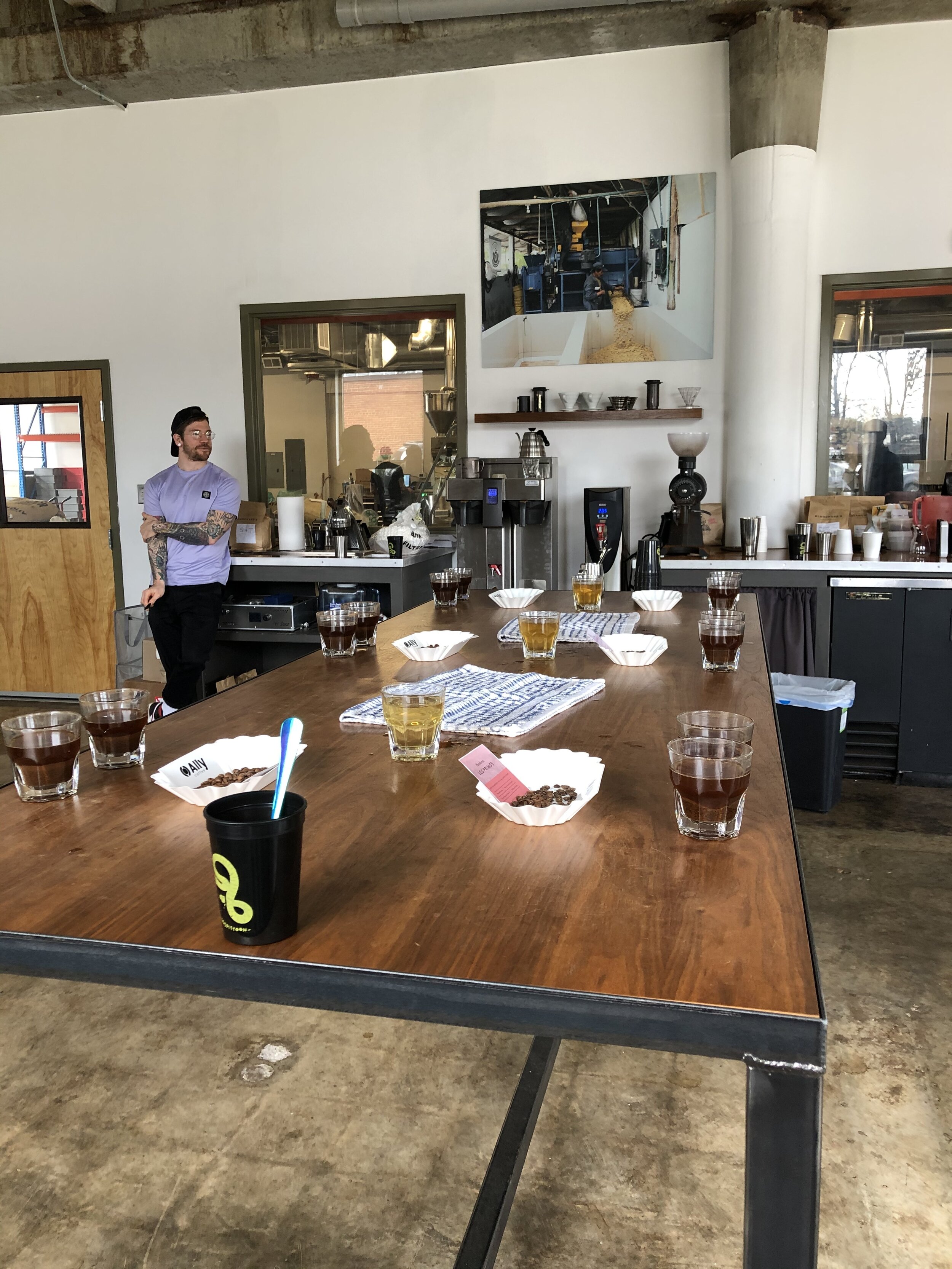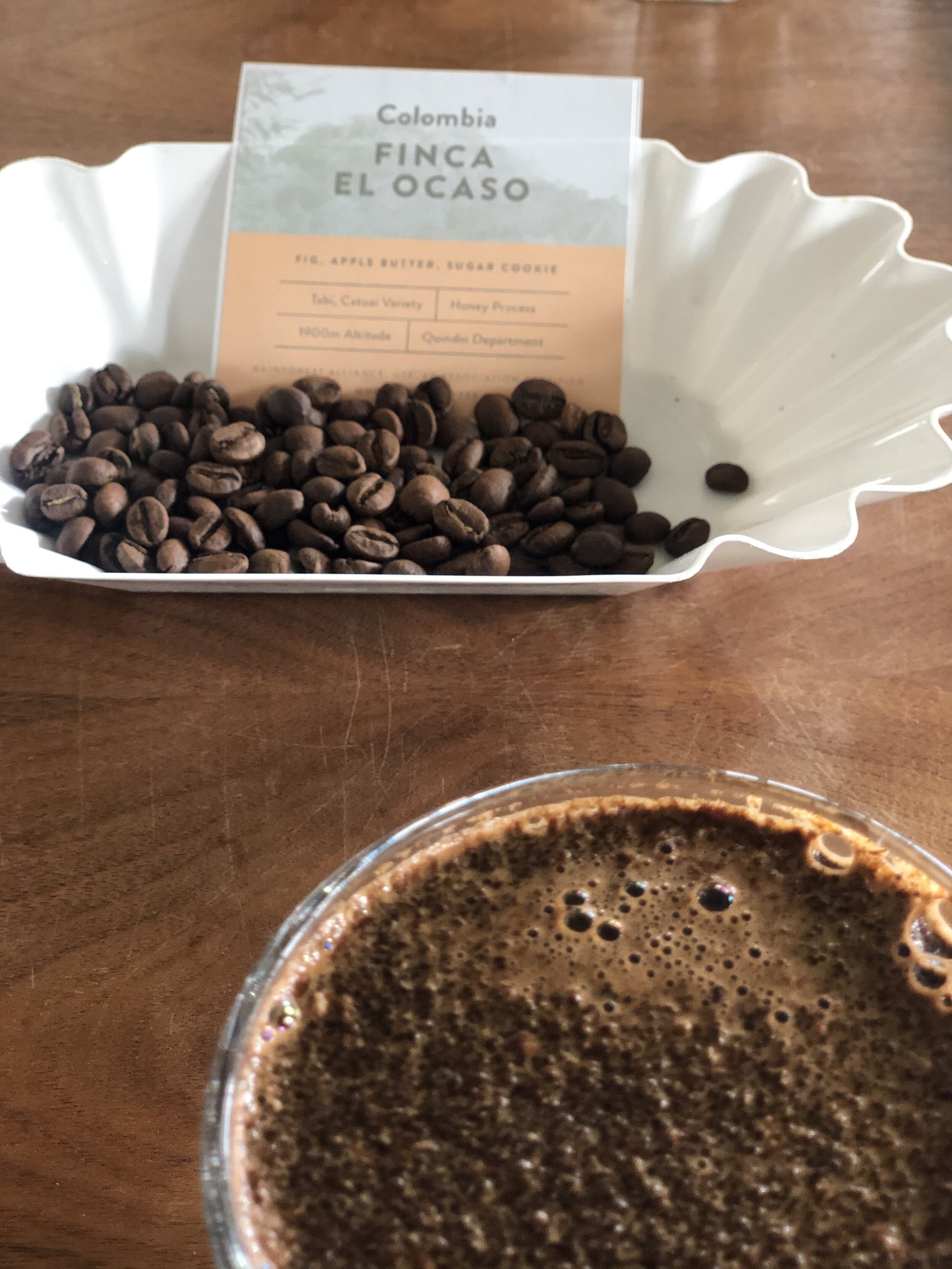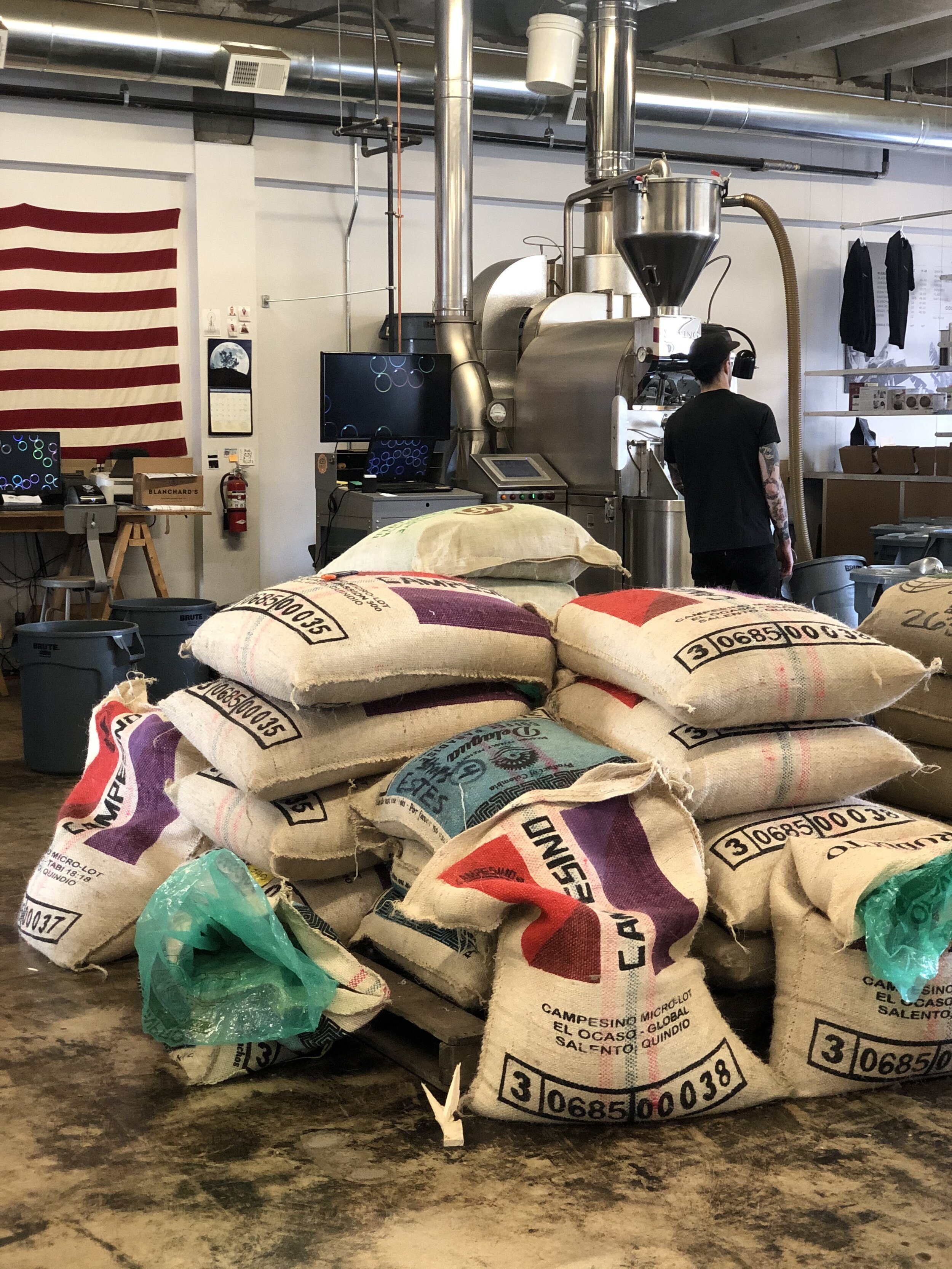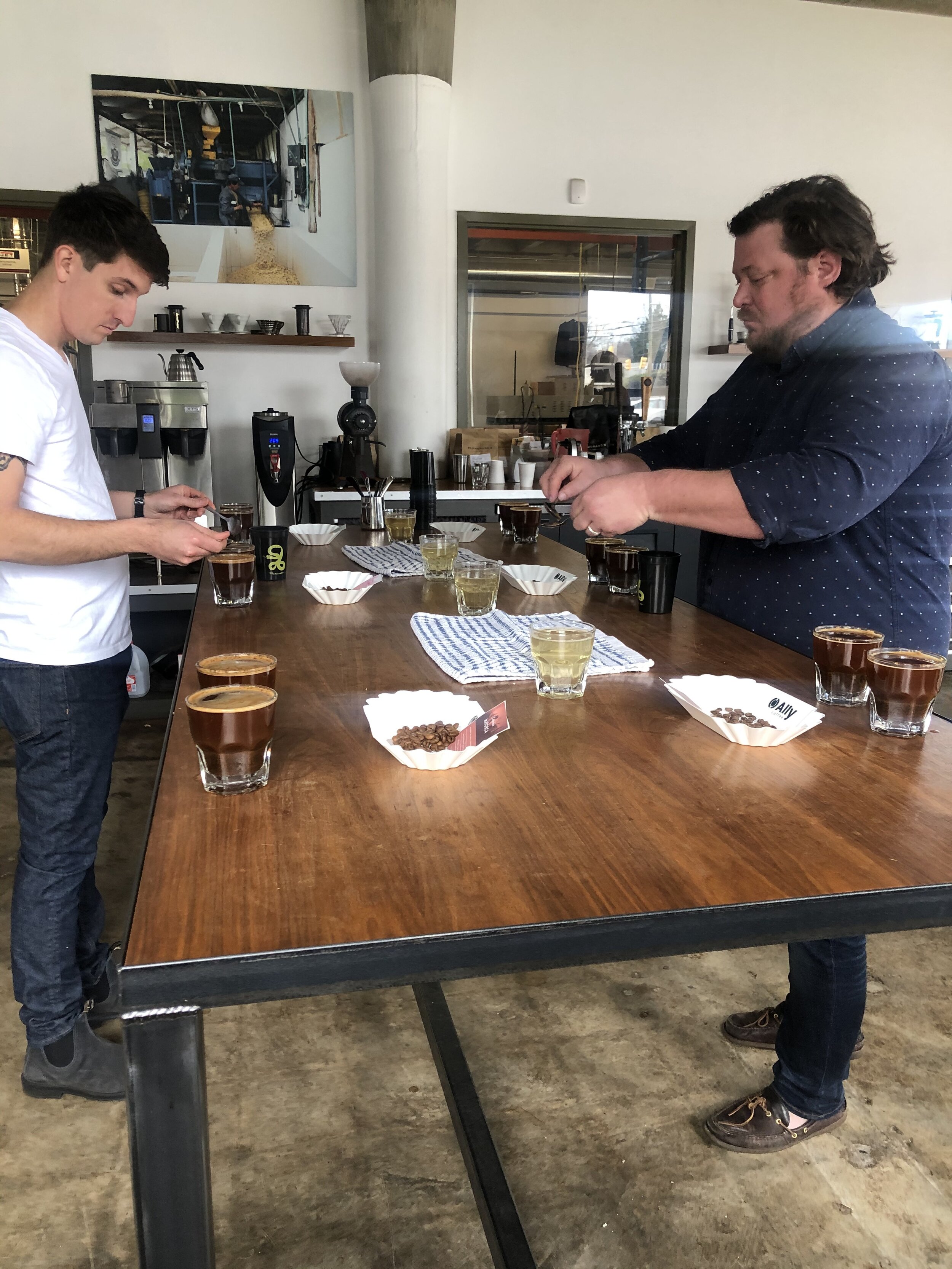One New Thing #1 Coffee Cupping at Blanchard's Roasting Coffee Co.
One New Thing #: 1
What: Coffee cupping
Where: Blanchard’s Coffee Roasting Co., Richmond, Virginia
Cost: Free
Fave thing: Slurping!
I have a coffee confession. I LOVE Starbucks. The darker the beans the better. In fact, if it tastes like rocket fuel or sludge, then you’ve made it right.
Enter: People who love coffee and want to show me a better way. Did I poke a little fun at their scale? Their $15 bag of coffee? The way they described a coffee that tastes like blueberries? You bet I did.
Did I end up buying a Chemex? Falling in love with Blanchard’s Holiday Roast and buying my OWN $15 bag of it? Actually tasting - gasp - things like fruit and chocolate notes in my coffee? Yes, yes I did.
Never in a million years did I think that I could be a person who could taste actual differences in coffee beans / roasts. I didn’t have an interest in exploring the speciality world of coffee. I considered all coffee to be dark and bitter and I liked how it tasted. (Note: I did have standards! Not a fan of gas station coffee or Dunkin Donuts).
As it turns out, coffee has a LOT of variations. And it IS possible to taste the differences - who knew! Perhaps my time in the beer industry has taught me a thing or two about agricultural products, combinations of different ingredients, and how the way something is made or fermented affects the overall taste (farmhouse and lambic beers, for example).
For this week’s One New Thing (and the FIRST one of 2020), I wanted to make it something coffee related. It only seemed right - new year, new goals = need for caffeine. I thought, maybe I’ll hit up a new coffee shop in Richmond. Scrolling on Instagram, one thing led to another, and the next thing I knew - lightbulb! I should go experience coffee.
Fortunately for me, Blanchard’s Coffee Roasting Co. offers free, public coffee cuppings every Friday at 10:30 AM at their roasting hub (not to be confused with their new and beautiful coffee shop on Broad Street.
I had no idea what to expect when I walked into Blanchard’s Friday morning. I took a ton of notes and will distill the finer points here along with my takeaways. I will do my best to relate my notes as factually as possible, but if I get a coffee thing or two wrong, just let me know and I will correct! There was a LOT to take it and it was all so extremely detailed - and proved that coffee is more than just really dark beans.
First lesson: coffee has personality! Cuppings are done for three reasons:
Quality control
Inform purchasing decisions
Professional development
Second lesson: Cupping is done in four major stages:
Size - assess the beans: looking for aroma, size and color differences. Two cups of the same coffee are done in each of these rounds for quality control. When cupping professionally (vs. public), FIVE cups are used to test for variances in each roast. Coffee beans (from a cherry) are an agriculture product - meaning there can be natural variances in the same coffee due to that particular year’s crop from rain, sun, and other natural occurrences.
Smell - ground beans + smell again
Steep - add in water, steep, stir + smell (again!)
Slurp! - this is where you do the actual tasting and surprise - you don’t sip it, you audibly slurp (you’re basically inhaling the coffee and using your teeth as a means to aerate the liquid) it from spoons and do three full rounds of slurping. 1st: assess basic instinctual flavors. 2: assess acidity. 3: assess overall balance - how does flavor and acidity work together? It also allows you to assess the coffee from hot as it cools. You know how some beer ages well? Or it’s better when it is room temp? Same premise here
We tasted 6 different coffees from Columbia, Honduras, Kenya and Ethiopia. Three were done in a natural processing method and three were done in a fully washed processing method (who knew that was a thing right?). I certainly picked up different flavors from each coffee - some I immediately didn’t like - they tasted a little too sour or one had a little too much fruit raspberry (note, if you watch my face closely in the slurping part of the video, you’ll see an expression where I don’t really like what I’m tasting!) - and others felt more earthy while still being full of flavor. I don’t think I am particularly great at pulling out specific tasting notes in things like beer, wine or coffee, but I could taste some of what was listed on the notes: vanilla, cinnamon, figs, or raspberry for example.
I’d like to point out that if you want to go to a cupping to actually drink coffee - that didn’t happen. The cupping process is a really diluted version of coffee compared to the version you would brew to drink. So no one’s getting a caffeine buzz!
Third lesson: You don’t have to be a “coffee nerd” or “snob” (terms used lightly here friends!) to go to a cupping. Even though I’m a professed coffee lover, I am by no means a professional, home roaster (yes, that’s a thing!), or even that in tune with the finer details of coffee. But I am a big believer in knowing and understanding the process behind things (basically the whole reason I did my 200 hour Yoga Teacher Training) and I thoroughly enjoyed even the smallest experience of what goes into making a speciality coffee roast. John, our fearless coffee cupping leader, went into the details behind how the beans are processed (dry, honey, full wash), where they were from, and the different ways they tasted. Each step of the process was done in a very scientific method: on a timer or measured. Beans were weighed in a scale, water poured at just the right temperature, coffee stirred at the correct time, and slurping commenced when the timer went off.
Blanchard’s made the whole coffee thing VERY approachable - no snobs here. Everyone had the option to share their own personal tasting notes - or not - and John said that there were no right or wrong coffee answers - everyone tastes and interacts with the coffee differently. I can’t speak for cuppings at all coffee shops, but Blanchard’s does it right and makes everyone feel welcome no matter what stage of your coffee prowess you’re at. At this particular cupping, most of the attendees besides myself and a friend were repeats.
While I don’t yet know if I love beans from Kenya over Honduras, it’s fun to know that there IS a difference and see if I can pick it out when trying different coffees. I am not buying speciality coffees every week, but I have a much deeper appreciation for coffee as an industry after this experience and it’s making me think more about - if I am going to spend my money on coffee beans - where and how it’s being made.
I’d also like to point out, I still don’t have a scale (but it’s something Amazon is remedying as you read this. ;)).


